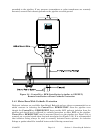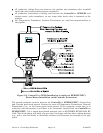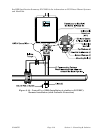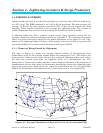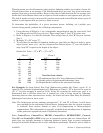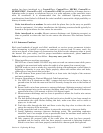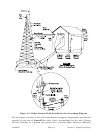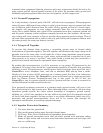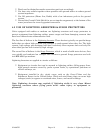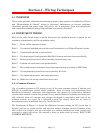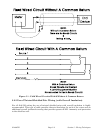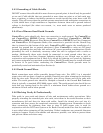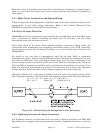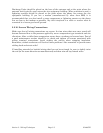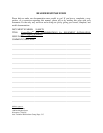
S1400CW Page 4-6 Section 4 - Lightning & Surge
i Watch out for dissimilar metals connections and coat accordingly.
i Use bare wire radials together where possible with ground stakes to reduce ground
system impedance.
i Use I/O protectors (Phone line, Radio) with a low inductance path to the ground
system.
i Ground the Coaxial Cable Shield (or use an impulse suppressor) at the bottom of the
tower just above the tower leg ground connection.
4.2 USE OF LIGHTNING ARRESTERS & SURGE PROTECTORS
Units equipped with radios or modems use lightning arresters and surge protectors to
protect equipment from lightning strikes, power surges and from damaging currents that
have been induced onto communication lines.
The first line of defense is the Lightning
Arrester. These devices typically use gas discharge
bulbs that can shunt high currents and voltages to earth ground when they fire. The high
current, high voltage gas discharge bulb has a relatively slow response time and only fire
when their gas has been ionized by high voltage.
The second line of defense is the Surge
Protector, which is made of solid state devices, fires
very quickly and conducts low voltages and currents to ground. Surge protectors are built
into BBI 9600 bps modems.
Lightning Arresters are applied to circuits as follows:
i Equipment or circuits that can be exposed to lightning strikes, falling power lines,
high ground currents caused by power system faults, by operational problems on
electric railways, etc.
i Equipment installed in dry, windy areas, such as the Great Plains and the
Southwest Desert in the United States. Wind and wind blown dust can cause high
voltages (static) to appear on overhead wires, fences, and metal buildings.
Note: Lightning Arresters may explode if lightning strike is very close. Mount
lightning arresters where flying parts won't cause injury to equipment or
personnel.



